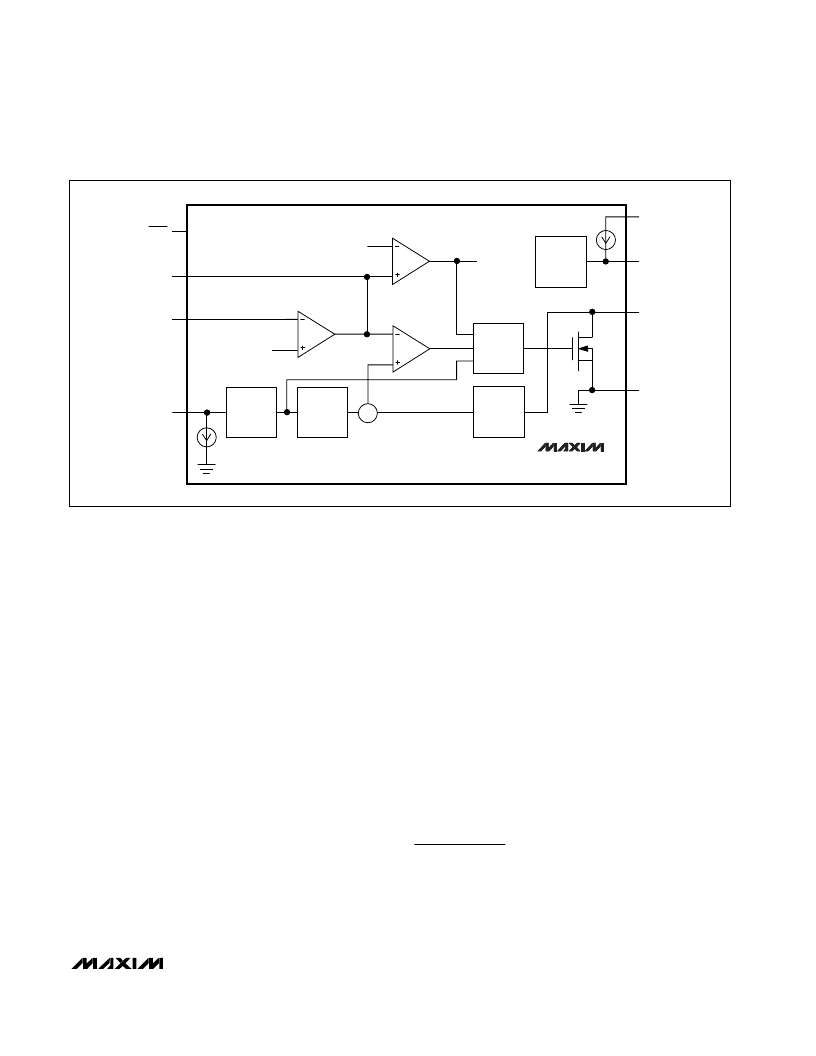- 您現(xiàn)在的位置:買賣IC網(wǎng) > PDF目錄385522 > MAX1790 (Maxim Integrated Products, Inc.) Low-Noise Step-Up DC-DC Converter(低噪聲步升DC-DC轉(zhuǎn)換器) PDF資料下載
參數(shù)資料
| 型號: | MAX1790 |
| 廠商: | Maxim Integrated Products, Inc. |
| 元件分類: | DC/DC變換器 |
| 英文描述: | Low-Noise Step-Up DC-DC Converter(低噪聲步升DC-DC轉(zhuǎn)換器) |
| 中文描述: | 低噪聲、升壓型DC-DC轉(zhuǎn)換器 |
| 文件頁數(shù): | 7/12頁 |
| 文件大?。?/td> | 405K |
| 代理商: | MAX1790 |

M
Low-Noise Step-Up DC-DC Converter
_______________________________________________________________________________________
7
Output Current Capability
The output current capability of the MAX1790 is a func-
tion of current limit, input voltage, operating frequency,
and inductor value. Because of the slope compensation
used to stabilize the feedback loop, the duty cycle
affects the current limit. The output current capability is
governed by the following equation:
I
OUT(MAX)
= [I
LIM
·
(1.26 - 0.4
·
Duty) -
0.5
·
Duty
·
V
IN
/ (f
OSC
·
L)]
·
η
·
V
IN
/ V
OUT
where:
I
LIM
= current limit specified at 65% (see
Electrical
Characteristics
)
Duty = duty cycle = (V
OUT
- V
IN
+ V
DIODE
) /
(V
OUT
- I
LIM
·
R
ON
+ V
DIODE
)
V
DIODE
= catch diode forward voltage at I
LIM
η
=conversion efficiency, 85% nominal
Soft-Start
The MAX1790 can be programmed for soft-start upon
power-up with an external capacitor. When the shutdown
pin is taken high, the soft-start capacitor (C
SS
) is immedi-
ately charged to 0.5V. Then the capacitor is charged at a
constant current of 4μA (typ). During this time, the SS
voltage directly controls the peak inductor current, allow-
ing 0A at V
SS
= 0.5V to the full current limit at V
SS
= 1.5V.
The maximum load current is available after the soft-start
cycle is completed. When the shutdown pin is taken low,
the soft-start capacitor is discharged to ground.
Frequency Selection
The MAX1790
’
s frequency can be user selected to
operate at either 640kHz or 1.2MHz. Tie FREQ to GND
for 640kHz operation. For a 1.2MHz switching frequen-
cy, tie FREQ to IN. This allows the use of small, mini-
mum-height external components while maintaining low
output noise. FREQ has an internal pull-down, allowing
the user the option of leaving FREQ unconnected for
640kHz operation.
Shutdown
The MAX1790 shuts down to reduce the supply current
to 0.1μA when
SHDN
is low. In this mode, the internal
reference, error amplifier, comparators, and biasing cir-
cuitry turn off while the N-channel MOSFET is turned
off. The boost converter
’
s output is connected to IN via
the external inductor and catch diode.
Applications Information
Boost DC-DC converters using the MAX1790 can be
designed by performing simple calculations for a first
iteration. All designs should be prototyped and tested
prior to production. Table 1 provides a list of compo-
nents for a range of standard applications. Table 2 lists
component suppliers.
GND
LX
IN
FREQ
FB
COMP
4
μ
A
5
μ
A
N
ERROR
COMPARATOR
ERROR
AMPLIFIER
ENABLE
COMPARATOR
SS
CLOCK
ENABLE
BIAS
SHDN
MAX1790
Σ
CURRENT
SENSE
CONTROL
AND DRIVER
LOGIC
SOFT-
START
SLOPE
COMPEN-
SATION
OSCILLATOR
∞
1.24V
Figure 2. Functional Diagram
相關(guān)PDF資料 |
PDF描述 |
|---|---|
| MAX1802 | Digital Camera Step-Down Power Supply |
| MAX1802EHJ | Digital Camera Step-Down Power Supply |
| MAX1804 | External Four-Input Feedback Integrator for Power Supplies |
| MAX1804EUB | External Four-Input Feedback Integrator for Power Supplies |
| MAX1809 | 3A, 1MHz, DDR Memory Termination Supply |
相關(guān)代理商/技術(shù)參數(shù) |
參數(shù)描述 |
|---|---|
| MAX1790ESA+ | 制造商:Maxim Integrated Products 功能描述:- Rail/Tube |
| MAX1790EUA | 功能描述:直流/直流開關(guān)轉(zhuǎn)換器 Integrated Circuits (ICs) RoHS:否 制造商:STMicroelectronics 最大輸入電壓:4.5 V 開關(guān)頻率:1.5 MHz 輸出電壓:4.6 V 輸出電流:250 mA 輸出端數(shù)量:2 最大工作溫度:+ 85 C 安裝風(fēng)格:SMD/SMT |
| MAX1790EUA+ | 功能描述:直流/直流開關(guān)轉(zhuǎn)換器 Low-Noise Step-Up RoHS:否 制造商:STMicroelectronics 最大輸入電壓:4.5 V 開關(guān)頻率:1.5 MHz 輸出電壓:4.6 V 輸出電流:250 mA 輸出端數(shù)量:2 最大工作溫度:+ 85 C 安裝風(fēng)格:SMD/SMT |
| MAX1790EUA+T | 功能描述:直流/直流開關(guān)轉(zhuǎn)換器 Low-Noise Step-Up RoHS:否 制造商:STMicroelectronics 最大輸入電壓:4.5 V 開關(guān)頻率:1.5 MHz 輸出電壓:4.6 V 輸出電流:250 mA 輸出端數(shù)量:2 最大工作溫度:+ 85 C 安裝風(fēng)格:SMD/SMT |
| MAX1790EUA+-T | 制造商:Maxim Integrated Products 功能描述:CONV DC-DC SGL-OUT STEP UP 8PIN UMAX - Tape and Reel |
發(fā)布緊急采購,3分鐘左右您將得到回復(fù)。